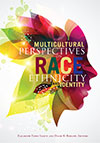 In the past 30 years, the United States has undergone an unprecedented and accelerated growth in the diversity of its population. These changes affect all elements of our society, underscoring the need for an informed and knowledgeable public that can understand, respect, and communicate with people of diverse backgrounds.
In the past 30 years, the United States has undergone an unprecedented and accelerated growth in the diversity of its population. These changes affect all elements of our society, underscoring the need for an informed and knowledgeable public that can understand, respect, and communicate with people of diverse backgrounds.
To foster further dialogue and insight into these issues, NASW Press has published Multicultural Perspectives on Race, Ethnicity, and Identity, edited by Elizabeth Pathy Salett and Diane R. Koslow. Multicultural Perspectives discusses the relationship between race, ethnicity, sense of self and the development of individual and group identity. It further explores the question of who we are and who we are becoming from the perspective of our multicultural, multilingual, and globally interconnected world. This book offers readers the opportunity to examine the importance of ecological and environmental factors in defining how we experience our lives and the world around us.
Joseph G. Ponterotto, PhD, Professor of Counseling Psychology at Fordham University writes:
Editors Salett and Koslow have assembled an interdisciplinary group of scholars to explore cutting-edge issues in the study of self and identity within the multilayered contexts of race, ethnicity, and oppression.
The chapter authors introduce a variety of ways of thinking about racial and ethnic identity development. Each chapter reviews the social, economic, and political processes related to building and preserving racial and ethnic identities and perceptions of self. Chapters include:
- Elsie Achugbue’s Introduction
- Identity, Self, and Individualism in a Multicultural Perspective, by Alan Roland
- African American Identity and Its Social Context, by Lee Jenkins
- Children of Undocumented Immigrants: Imperiled Developmental Trajectories, by Luis H. Zayas and Mollie Bradlee
- Racial and Ethnic Identities of Asian Americans: Understanding Unique and Common Experiences, by Greg M. Kim-Ju and Phillip D. Akutsu
- Indigenous Peoples and Identity in the 21st Century: Remembering, Reclaiming, and Regenerating, by Sandy Grande, Timothy San Pedro, and Sweeney Windchief
- White Racial Identity Development: Looking Back and Considering What Is Ahead, by Lisa B. Spanierman
- Growing Up Multiracial in the United States, by Robin Lin Miller and NiCole T. Buchanan
- What It Means to Be American, by Jennie Park-Taylot; Joshua Henderson, and Michael Stoyer
The authors take as their premise a shared belief that in the context of a pluralistic society, the values, mores, and status of the group or groups with which we each identify have a profound effect on how we view ourselves and on how we view and interact with others. The book provides an opportunity to delve into the historical contexts and processes that have shaped each of us while navigating the sea of change that will define our future. It urges us to seek the common humanity in those very different from ourselves.
In any book about multiculturalism, there could be dozens of chapters representing different identity groups and many more perspectives addressing any one group. The editors chose to focus on issues related to race and ethnicity. Multiculturalism is also a broader concept that includes differences such as gender, age, religion, class, sexual orientation, and variations in abilities. It includes different perspectives, worldviews, values, belief systems, and social and economic conditions, often intersecting between and across these differences.
The editors note that historically, race has been defined as a biological classification of human features and characteristics. In the context of the United States, race has also been recognized as a social construct, a concept of complex and inconstant meaning, influenced by social conflict and political struggle. Race is often also used to differentiate among human beings in social structure and cultural representation and can lead to distortions in self-image and perception of and by others.
Ethnicity generally describes a group’s sense of possessing a shared identity informed by a common language, culture, or religion. Racial and ethnic identities often overlap. One person may be Caucasian by race and Anglo-Saxon or Jewish by ethnic group; another may be Latino by ethnic and linguistic group but of African, Caucasian, or Native American racial heritage. As with race, our ethnicity plays a major role in how we are viewed by others, in who we believe we are, and in who we may or may not want to be.
Identity development is a process through which we create a sense of self influenced by history, community, family, and personal characteristics. In the context of the United States, autonomy is one way identity is expressed. In many cultures around the world, however, less emphasis is placed on individual autonomy, and the development process engenders the creation of a “familial” self that reflects an interdependency among family or cultural group members. Whether individual or familial, our perceptions of ourselves are undoubtedly influenced by our interactions with and relationships to one another.
As Elsie Achugbue notes in her introduction:
Multicultural Perspectives on Race, Ethnicity, and Identity illustrates the multiple ways that racial, ethnic, individual, and group identity and sense of belonging are etched in our collective history, deeply ingrained in the process of our birth and growth as a nation. This has occurred on an internal and individual level, in our understanding of ourselves and one another, as well as an external level, in shaping our national psyche and dominant cultural norms. In doing so, the authors have also chronicled our legislative past, identifying how race and ethnicity have been, and continue to be, so deeply intertwined with the law, governing everything from our interpersonal relationships and neighborhood interactions to our settlement patterns, development, and expansion. The authors present an invaluable examination of how understanding and accepting this history, given its inherent influence in our personal lives, families, and communities, can contribute to much-needed change that will ensure we remain on the path toward becoming a truly multicultural society in which each one of us can participate and thrive. They rightly ask the question of what this means not just for individuals, or various racial and ethnic communities, but for all of us.



